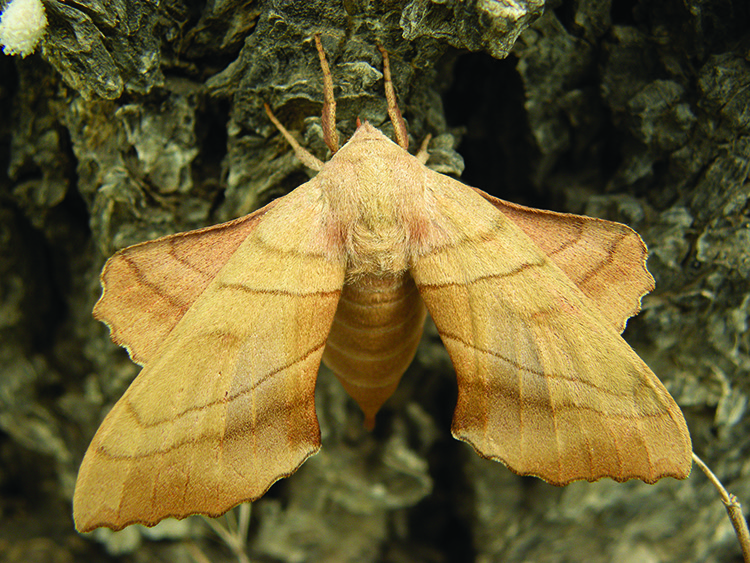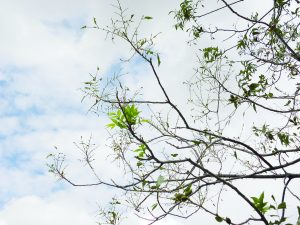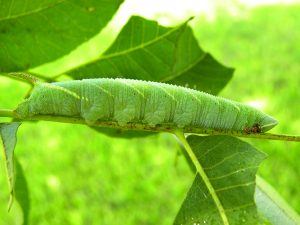Don’t delay in finding source of foliage damage

During its lifespan, the walnut sphinx caterpillar transforms into the walnut sphinx moth (as shown above). The adult walnut sphinx moth does not eat but can produce two broods of young in the southern United States, due to the warmer climate.(Photo by Bill Ree)
When it comes to protecting a crop from insect pests, most of us think of pecan nut casebearer, pecan weevil, stink bugs and hickory shuckworm as the most important pests but there are several foliage pests that can also have severe early season negative impacts.
In the May 2016 issue of Pecan South, I discussed walnut caterpillar but there is another foliage pest that can have just as much impact and that is the walnut sphinx caterpillar, Amorpha juglandis, (other genus names which have been used are: Cressonia and Laothoe). This insect is reported to feed on leaves of walnut, butternut, hickory, alder, beech, hazelnut and hop-hornbeam.
Although not as common in damaging numbers as walnut caterpillar, high densities of this insect can cause significant defoliation, which in turn would seriously impact a crop. I have observed the walnut sphinx caterpillar from time to time in pecan canopies but my first experience with this insect as a serious pest was in June 2012 where high populations caused significant defoliation in Comanche County to non-managed trees in native bottoms, home yard trees and trees along roadside fence lines.
The Walnut Sphinx moth is in the family Sphingidae, which contains Sphinx or Hawk Moths with the larval stage being referred to as hornworms. The larval stage of the walnut sphinx moth has the typical “horn” or projection on end of the abdomen with a very distinct yellow stripe coming off the spine, the head is pointed, outlined in yellow and the skin has a grainy appearance or texture. I have also read that the larvae make a squeaking sound when disturbed. This squeaking sound is probably a defensive effort to scare off predators.
The foliage damage caused by this insect will resemble walnut caterpillar feeding but the differences I have observed are the lack of cast skins on the side of the tree or around the damaged foliage and the walnut sphinx caterpillars leave bits of ragged pieces of foliage on the leaf.
From observations in Comanche County on July 11, 2012, the current generation had finished feeding for no larvae were observed. Pupal cases were found at the base of trees in leaf and grass litter with most pupal cases in a late stage (black) but there were a few early stages (green cases). Also, some adults were observed just emerging and some mating was observed between these adults at the base of the tree so the next generation was on the way. Later in July early instar caterpillars were observed feeding on the new regrowth.
As with walnut caterpillar, a producer’s best defense against severe foliage loss is to be observant of any foliage loss, understand what insect may be causing loss and take action before significant damage occurs. Both walnut caterpillar and walnut sphinx caterpillars can be controlled with a wide range of insecticides but products specific for “caterpillars” would be preferred.



